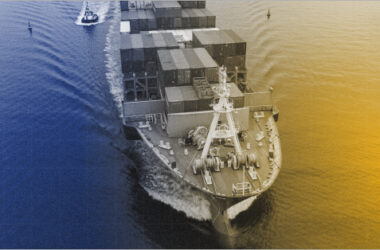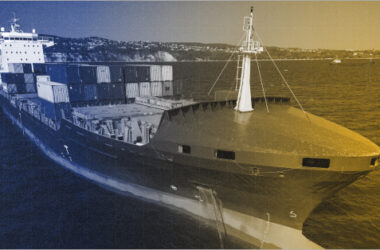Marine Open Insurance is a vital risk management tool for businesses involved in importing, exporting, or transporting goods domestically. For businesses with frequent shipping needs, a Marine Open Policy offers comprehensive coverage against various risks that could lead to financial loss during the transit of goods. In India, where trade and logistics play a significant role in the economy, Marine Open Transit Insurance ensures continuity and protection.
However, selecting the right Marine Open Policy can be a complex task. This blog will guide you through key considerations, empowering you to make informed decisions and ensuring your shipments are adequately protected.
Steps to Buy a Marine Open Policy
1. Assess Your Business Needs
- Identify Shipment Volume: Estimate the number of shipments and their frequency.
- Understand Your Risks: Analyse risks associated with your goods (e.g., perishability, theft, natural disasters).
- Mode of Transport: Determine if goods are transported via sea, air, road, or rail.
- Route Considerations: Some routes may have higher risks due to piracy or adverse weather conditions.
This assessment will help determine the type of coverage and policy limits required.
2. Research and Compare Insurers
- Reputation of the Insurer: Choose a well-established provider with a strong market presence and positive reviews.
- Policy Offerings: Compare insurers based on coverage scope, exclusions, and premium rates.
- Claim Settlement Ratio: Opt for an insurer with a high settlement ratio, ensuring reliable claim processing.
3. Understand the Marine Open Policy Coverage
Marine Open Transit Insurance typically includes:
- Institute Cargo Clause (A): Covers all risks of loss or damage except for specific exclusions.
- Institute Cargo Clause (B): Covers named perils like fire, stranding, collision, and more.
- Institute Cargo Clause (C): Covers major perils such as fire, explosion, and total loss due to sinking or collision.
- War and Strike Risks: Covers loss due to war, strikes, riots, or civil commotions.
It’s essential to select coverage that aligns with your business requirements.
4. Customise the Marine Open Policy
Work with the insurer to tailor your policy based on:
- Nature of Goods: High-value or fragile goods may require additional coverage.
- Geographical Scope: Ensure coverage extends to all regions where your business operates.
- Policy Limits: The sum insured is generally based on the invoice value of goods, including all charges, plus prepaid or guaranteed freight and an agreed additional percentage (typically 10%).
5. Obtain a Quotation
Provide the insurer with details such as:
- Nature of goods
- Expected shipment value
- Transportation modes
Insurers will evaluate risks and provide a premium quote. Compare multiple Marine Open Policy providers to get the best deal.
6. Review the Marine Open Policy Document
Before finalising the purchase:
- Terms and Conditions: Understand policy inclusions, exclusions, and special clauses.
- Premium Payment Terms: Check the schedule and payment modes.
- Claim Process: Ensure the claim procedure is straightforward and well-documented.
7. Finalise the Purchase
Once satisfied with the terms:
- Submit necessary documents, such as:
- Business registration certificate
- Details of goods and transportation
- Past claims history (if any)
- Business registration certificate
- Pay the policy premium as per the agreed schedule.
8. Maintain Proper Records
Keep records of all shipments, including:
- Bill of Lading or Airway Bill
- Insurance Certificate
- Invoice and Packing List
- Claim Bill (in duplicate)
- Survey Report (if applicable)
- Bill of Entry (if customs duty is covered)
- Correspondence with carriers regarding damage claims
These documents will be essential for claim processing.
Common Challenges While Purchasing Marine Open Transit Insurance and How to Address Them
1. Ambiguity in Policy Terms and Coverage
Challenge: Technical terms can be confusing, leading to uncertainty about coverage.
Solution:
- Request a detailed explanation of terms, conditions, and exclusions.
- Consult an insurance advisor or broker.
- Ask for practical claim examples for better understanding.
2. Choosing the Right Insurer
Challenge: Many insurers offer Marine Open Policies, making selection difficult.
Solution:
- Research the insurer’s reputation and claim settlement history.
- Check the Claim Settlement Ratio (CSR)—higher CSR means better reliability.
- Compare policy offerings, premium rates, and additional benefits.
3. Inadequate Coverage
Challenge: Some businesses may purchase a policy that lacks sufficient coverage.
Solution:
- Conduct a risk assessment considering goods type, transport mode, and shipping routes.
- Tailor the policy to include necessary add-ons like war risks and strikes.
- Note: Delays in transit are not covered unless they result in physical damage to the goods.
4. Difficulty in Understanding Exclusions
Challenge: Many businesses overlook exclusions, leading to unexpected claim rejections.
Solution:
- Review the policy document carefully to understand exclusions.
- Seek clarification from the insurer on unclear terms.
- Discuss possible adjustments if exclusions impact your operations.
5. Complex Documentation Requirements
Challenge: Submitting required documents can be time-consuming.
Solution:
- Prepare a checklist of necessary documents in advance.
- Maintain organised records of shipments and transactions.
- Use digital tools to manage documents efficiently.
6. Fluctuating Premium Costs
Challenge: Premiums vary based on shipment value, route, and mode of transport.
Solution:
- Choose policies with fixed premium rates where possible.
- Bundle multiple insurance policies with the same insurer for cost benefits.
- Avoid unnecessary add-ons that increase premiums without added value.
7. Delays in Policy Issuance
Challenge: Bureaucratic processes may delay policy issuance, exposing shipments to risks.
Solution:
- Start early to allow time for documentation.
- Regularly follow up with the insurer.
- Opt for insurers that offer online policy issuance for faster processing.
8. Inefficient Claims Process
Challenge: A slow claims process can strain finances.
Solution:
- Understand the claims procedure, including timelines and required documents.
- Keep shipment records handy.
- Choose insurers known for quick and transparent claim settlements.
- Claims must be submitted within 15 days of the loss or damage event.
9. Non-Compliance with Regulations
Challenge: Failure to follow IRDAI regulations can lead to claim disputes.
Solution:
- Stay updated on compliance requirements, including premium payment conditions under Section 64VB of the Insurance Act.
- Ensure adherence to declaration requirements and policy cancellation timelines (30 days for transit risks, 7 days for war and strike risks).
10. Overlooking Add-Ons and Customizations
Challenge: Generic policies may not provide optimal protection.
Solution:
- Discuss available add-ons like temperature-sensitive goods coverage or political risks.
- Customise policy terms, including warehousing risks or extended transit coverage.
The Bottom Line
Purchasing a Marine Open Insurance policy is a strategic decision for businesses involved in goods transportation. It provides financial protection, ensures smooth operations, and enhances business credibility. By following these steps and considering key factors like coverage, cost, and claims process, you can make an informed decision that safeguards your business against unforeseen risks.
Investing in Marine Open Insurance not only protects your assets but also instills confidence in your clients and partners, contributing to your business’s long-term success.







